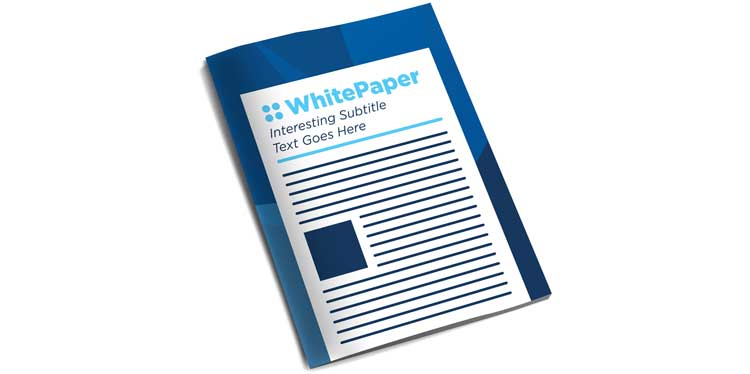A lot of confusion surrounds white papers. Out of all the content in the marketing toolkit, it is the least understood. Besides the variety of lengths, there are also several formats white papers come in. However, putting all of the “visuals” aside, it really comes down to content. In order to write an effective—and excellent—white paper, you’ll need to understand what goes in it and how the information is presented. Here are five keys to great white paper content.
What is a White Paper?
Before delving into the keys, it’s helpful to have a refresher about what a white paper is. In essence, it’s an informational report that establishes you as the authority and presents both a problem and solution for a very specific topic/issue. Some of the things to remember when writing a white paper are:
- It is in-depth.
- It is an advanced problem-solving guide.
- It educates about particular topics/issues.
- It offers a solution or solutions through a specific process.
White papers are often on websites and available for download. For consumers/visitors to download them, they typically have to enter an email address. This type of content can be incredibly effective in generating leads.
Keys to Great White Paper Content
Writing is an art, and each type of content demands a different skill. White papers differ in many ways from general blogs, eBooks and other types of marketing content. Five keys to creating an effective and well-written white paper include:
1. Don’t turn it into a sales pitch.
Because a white paper is a marketing document, it can be tempting to push your product/service/solution harder than you need to. Even though your process is the solution to the issue you’re covering, you should aim to support it with evidence, facts and real-world examples. You can “highlight” features of what you have/do, but don’t make promoting it the central focus.
2. Pull the fluff.
The one thing you don’t want in a white paper is what people call “fluff” or filler. Think excess adjectives or descriptors. You want to keep it sharp, focused and to the point. In the content world, white papers are your academic/technical papers. They should be dense with solid information, and they naturally won’t be as easy to read. People will typically go through them more than once to gather all the information. They don’t have to be boring, but they should be serious and detailed enough to establish credibility.
3. Fill it with stats and support.
Your white paper should be full of solid research. It should cite and support solutions and back it with reputable sources. The writer of a white paper should expect to sift through information to identify the best and most current resources and references. While it won’t have the same pizazz other content does, it will certainly present you as an expert. Note that a white paper should never be an opinion.
4. Add structure.
While you’ll find varying lengths, in general, white papers should have a basic structure and minimum length. The average white paper is six to eight pages. It will include the following:
- Title page
- Table of contents
- Intro and sometimes an executive summary
- The problem
- The solution
- Example(s) of the solution in action
- Conclusion
5. Have the content work with the visuals.
The writer should work in tandem with graphics, charts and other visuals. If you are able to preview what else the company will be using within the whitepaper, it can guide you in the content. That won’t always be the case, but hopefully you’ll have a template or previous example to work from. If you have none, design an outline following the structure above.
White paper content usually takes more time to write, and often demands revisions and polish. When you use the keys to do it right, you’ll have an invaluable resource that generates leads and gives your company an expert reputation.






